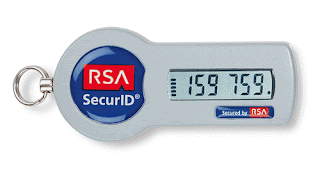I have just received seen a headline from TechMarketView announcing:
"By the end of the decade, we expect that cloud-based packaged software will represent nearly 30% of all UK software spend, leaving the market for legacy ‘on-premise’ products in irreversible decline."
I have always followed and respected the analysts at TechMarketView and working at the coal face I would even go as far to say that this estimate is on the conservative side. If (or looking more like when) this shift happens the UK "channel" landscape will look very different.
Hardware SalesIf 30% of software is on cloud then at least a similar % of hardware will be powering the cloud. Although as a large percentage of the remaining 70% could be legacy software sales with revenue driven by term licences and subscriptions, new application deployments (which typically drives hardware sales) will be greater than 30%. This therefore means that the hardware channel will be condensed to a fewer number of customers, with the major cloud service providers being the biggest buyers. The economies for service providers will focus on enterprise end kit, greater discounts and a demand high levels of virtualisation. This will apply not only to server & storage, but also security appliances, switches, routers etc..
As a service provider we are already seeing hardware vendors recognise this and they actually help to market our services (rather than their product) because the knock on effect of us taking on more customers means we need more of their kit.
The dominance of the service providerThe demand for SaaS from users is forcing ISVs to do or die and I truly haven't spoken to a software vendor who doesn't have a plan to adopt an element of cloud in the last 6 months. The main problem is that ISVs typically don't have the skills to build and maintain the infrastructure and frankly still just want to concentrate on their application. Therefore the majority of SaaS deployments are based on an established cloud providers infrastructure. Which sets the scene for cloud service providers to become a dominant force as Cloud eats into the UK software market. This is a real worry for the smaller traditional IT resellers, whose revenues rely on product sales, consultancy and post sales support because the market they are addressing is a diminishing one, the full effects of which is a ticking bomb.
Environmental benefits One natural benefit of software moving to a cloud model is that cloud service providers, driven by virtualisation are going to be very efficient against a large number of independent end user deployments. The cost of power and space will have a big role to play and the service provider will be driven to find efficiencies in this area.If you look at the benefits of virtualisation for just 50 servers, the efficiencies just get better as the magnitude increases.
The above are a few initial thoughts but the effects of a simple headline announcing "a market change" will be profound and will touch the way we use applications, accountancy processes and the IT channel as we know it today. One major hardware vendor said to me recently (in all seriousness) that they can see a place in the future where 90% of their business is condensed to a handfull of major cloud service providers...food for thought.
